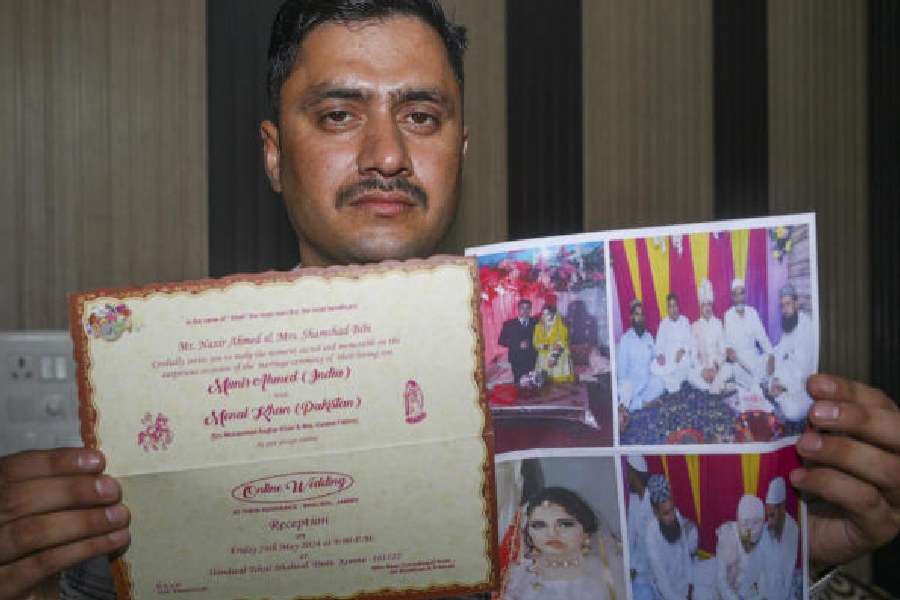Jamini Roy was born on Poila Baishakh 1280 (April 11, 1887) in a village of Bankura district. By the time he died in 1972, he was widely regarded as one of the most important Indian artists of our times. He had forged a signature style of his own as behoved a practitioner exposed to the modern art movement. He drew inspiration, however, not from any Western model but from the folk traditions of Bengal, from Kalighat pat in particular.
His 50th death anniversary hardly created any stir on the Calcutta culture scene. However, a bust of the path-breaking artist was installed recently at Rajballavpara, and the organiser, Sutanuti Boimela Committee, published a compilation of critical writing on the artist mostly in Bengali but English as well on the occasion. Titled Jamini Roy: Sradharghya, the slim volume contains important essays that came out when he reached the apogee of his career.
 |
This books proves that although his art was the very picture of deceptive simplicity with bold, spontaneous lines defining the images, Jamini Roy was a hard nut to crack, quite capable of making controversial statements about our venerated Indian miniatures and even the frescoes of Ajanta and the Konark temple, for which he did not have much time. He went so far as to say that Rabindranath painted in a “pure Western manner” and the poet was quite delighted by the artist’s analysis of his work. He added that Tagore had mastered both the art of applying pigments and the use of lines through the sheer power of his imagination.
Buddhadeb Bose was rather exasperated by Jamini Roy’s “unreasonable” remarks and his habit of clamming up and citing his native village Beletor as the epitome of the Indian. Yet it was Bose, along with poets Sudhindranath Datta and Bishnu Dey and art critic Shahid Suhrawardy, who had through their writings introduced him to the international art scene, where he was widely accepted as the Indian artist of the moment. The book carries these delightful and thoughtful essays apart from pieces by Tarashankar Bandyopadhyay and Sankha Ghosh.
The book contains several photographs of Jamini Roy’s studio hung with his paintings as he worked on several at the same time. On seeing these photographs, one can well understand why Jamini Roy is such a huge favourite among plagiarists. There are some reproductions of paintings as well but the printing is so poor it is better to forget them.










